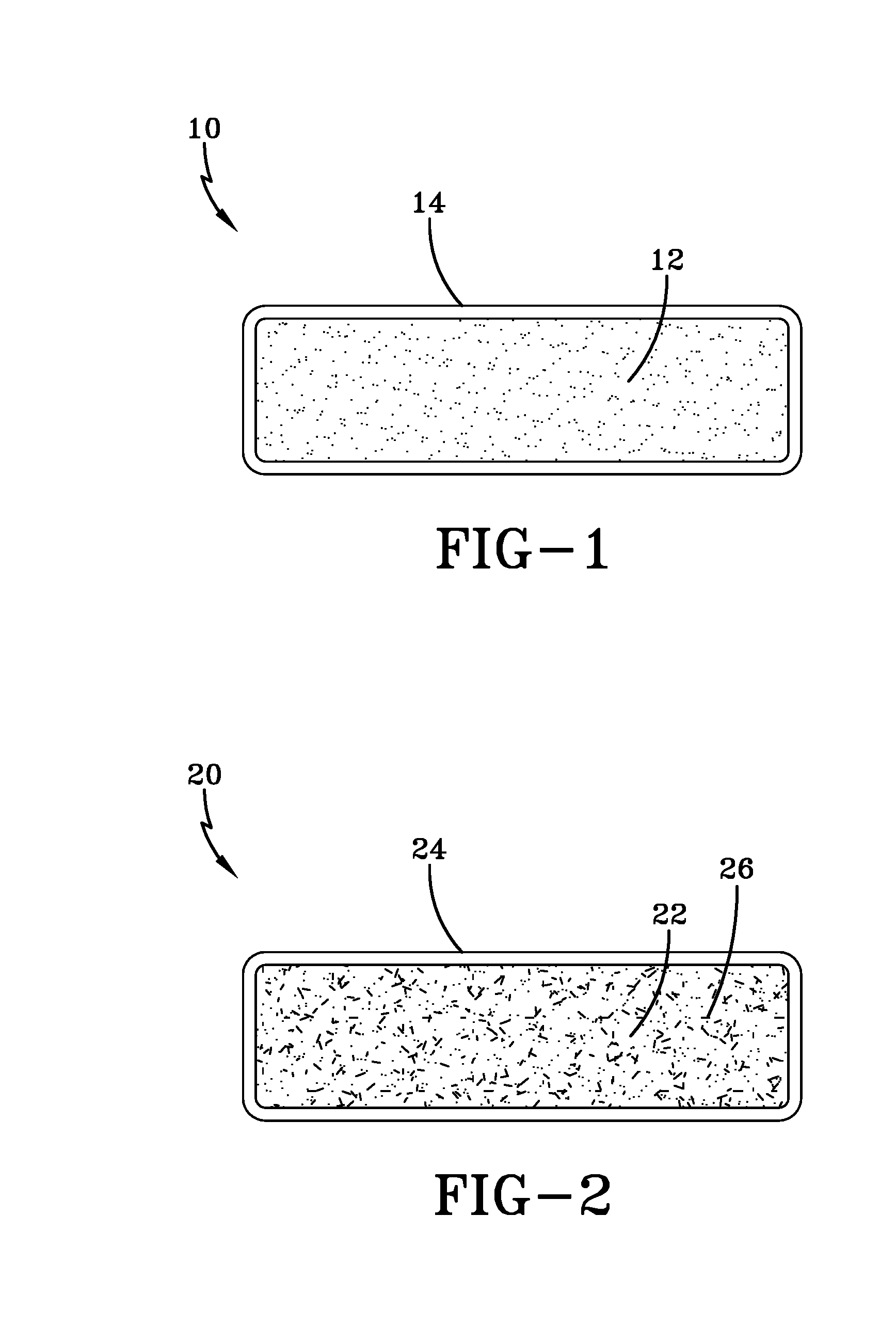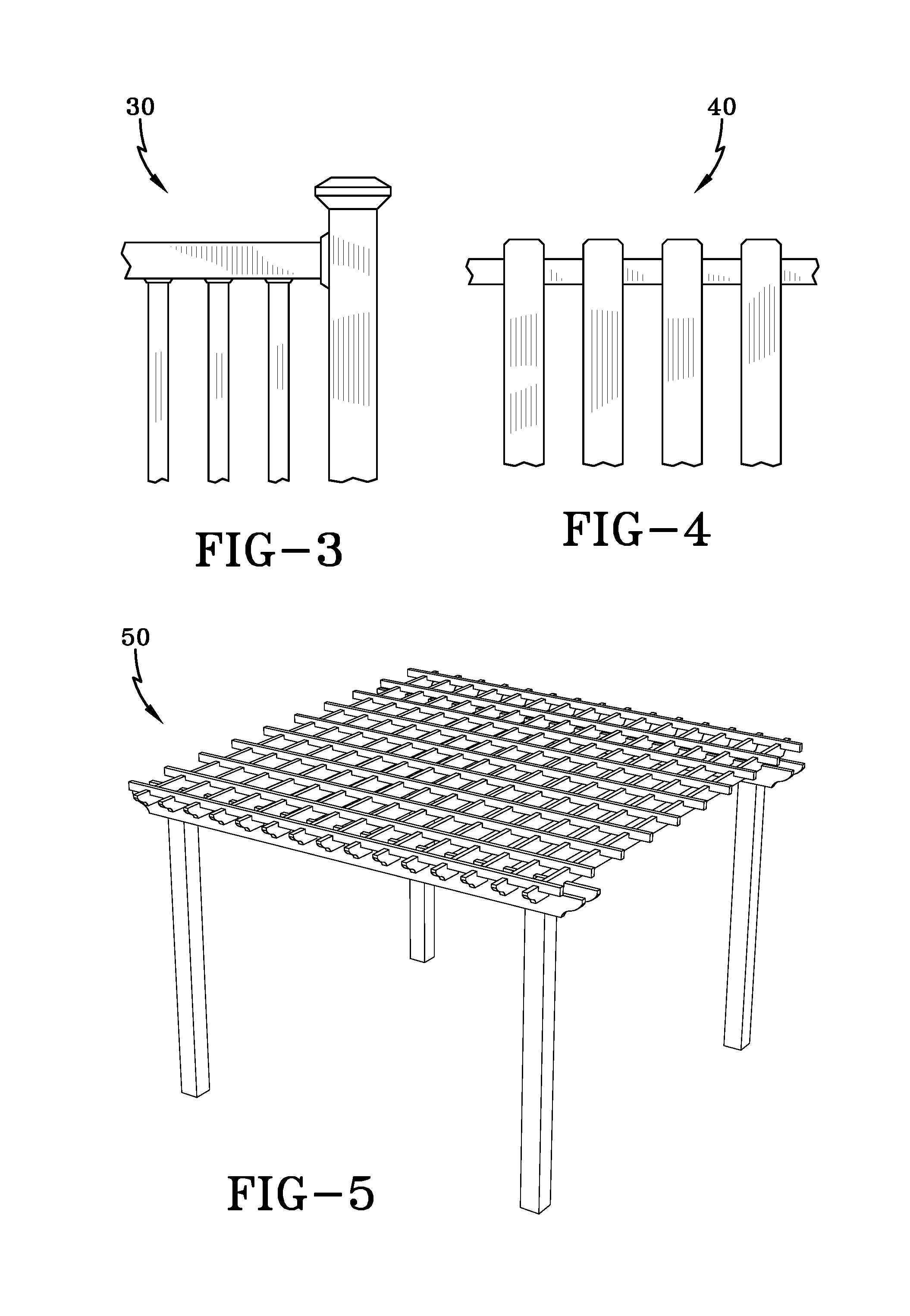Use of recycled packaging in polymer composite products
a polymer composite and packaging technology, applied in the field of composite products, can solve the problems of insufficient supply of virgin materials, high cost, and inability to meet the requirements of the same composite made with virgin materials, and achieve the effects of reducing the static charge of the composite material, reducing the cost of virgin materials, and limiting the adhesion of the cap layer
- Summary
- Abstract
- Description
- Claims
- Application Information
AI Technical Summary
Benefits of technology
Problems solved by technology
Method used
Image
Examples
Embodiment Construction
)
[0018]Exemplary embodiments of the present invention are directed to composite materials and products and related methods of manufacturing. An exemplary composite material may include at least one of polyethylene, polypropylene, other olefin (e.g., polyolefin), or ionomer. Other exemplary embodiments may include at least one of polyethylene terephthalate (PET), nylon, and metal filler. In particular, one embodiment of a composite may include polyethylene, PET, and metal with recycled packaging (e.g., used beverage pouches, other liquid containers, or other aluminized packaging). Another exemplary embodiment of a composite may include polyethylene, nylon, and metal with recycled packaging (e.g., used beverage pouches, other liquid containers, or other aluminized packaging). Other types of used multilayer packaging or films comprising at least one of the aforementioned materials may also be used. For example, other multilayer packaging or films, not limited to beverage pouches such a...
PUM
| Property | Measurement | Unit |
|---|---|---|
| temperatures | aaaaa | aaaaa |
| temperatures | aaaaa | aaaaa |
| weight | aaaaa | aaaaa |
Abstract
Description
Claims
Application Information
 Login to View More
Login to View More - R&D
- Intellectual Property
- Life Sciences
- Materials
- Tech Scout
- Unparalleled Data Quality
- Higher Quality Content
- 60% Fewer Hallucinations
Browse by: Latest US Patents, China's latest patents, Technical Efficacy Thesaurus, Application Domain, Technology Topic, Popular Technical Reports.
© 2025 PatSnap. All rights reserved.Legal|Privacy policy|Modern Slavery Act Transparency Statement|Sitemap|About US| Contact US: help@patsnap.com


